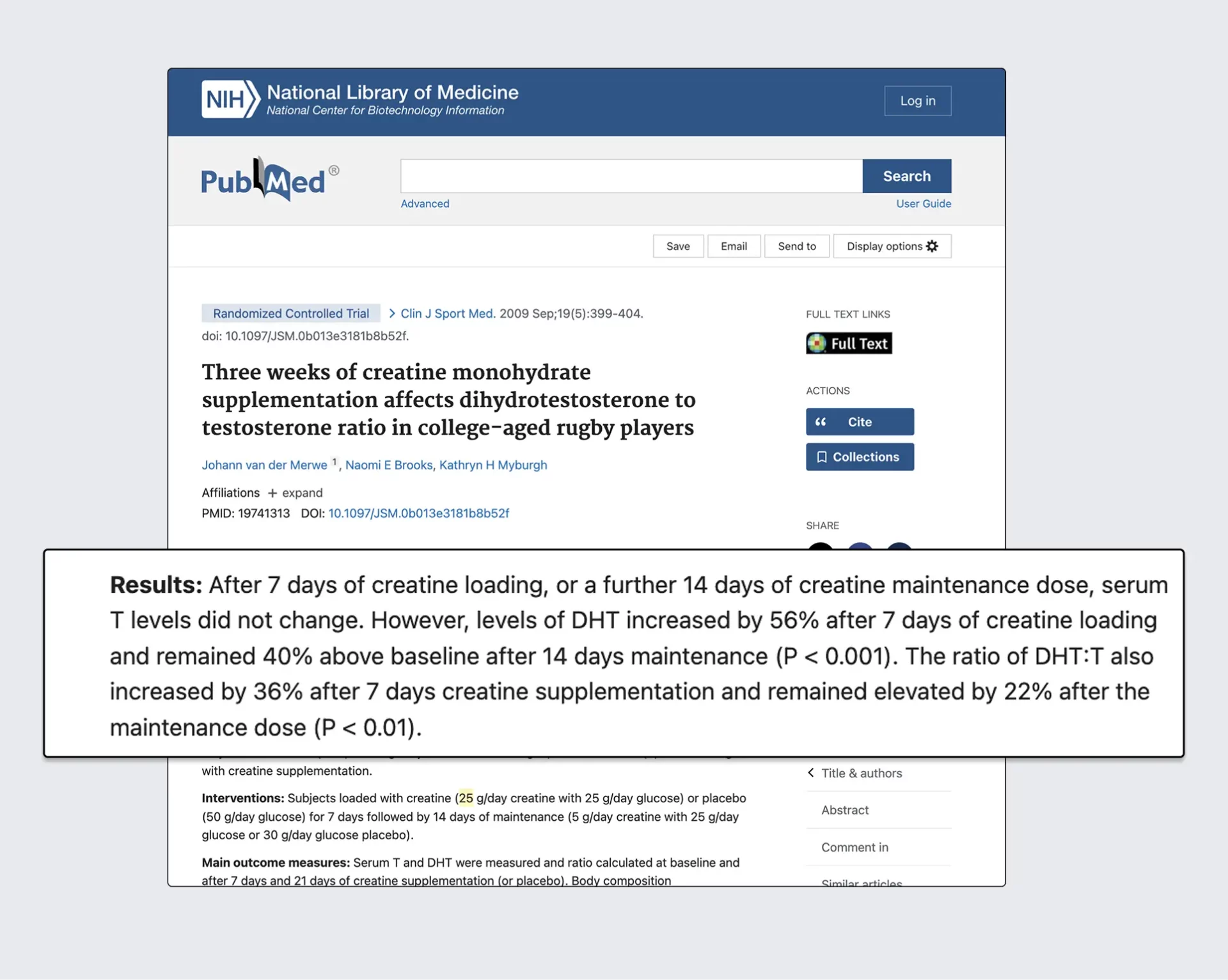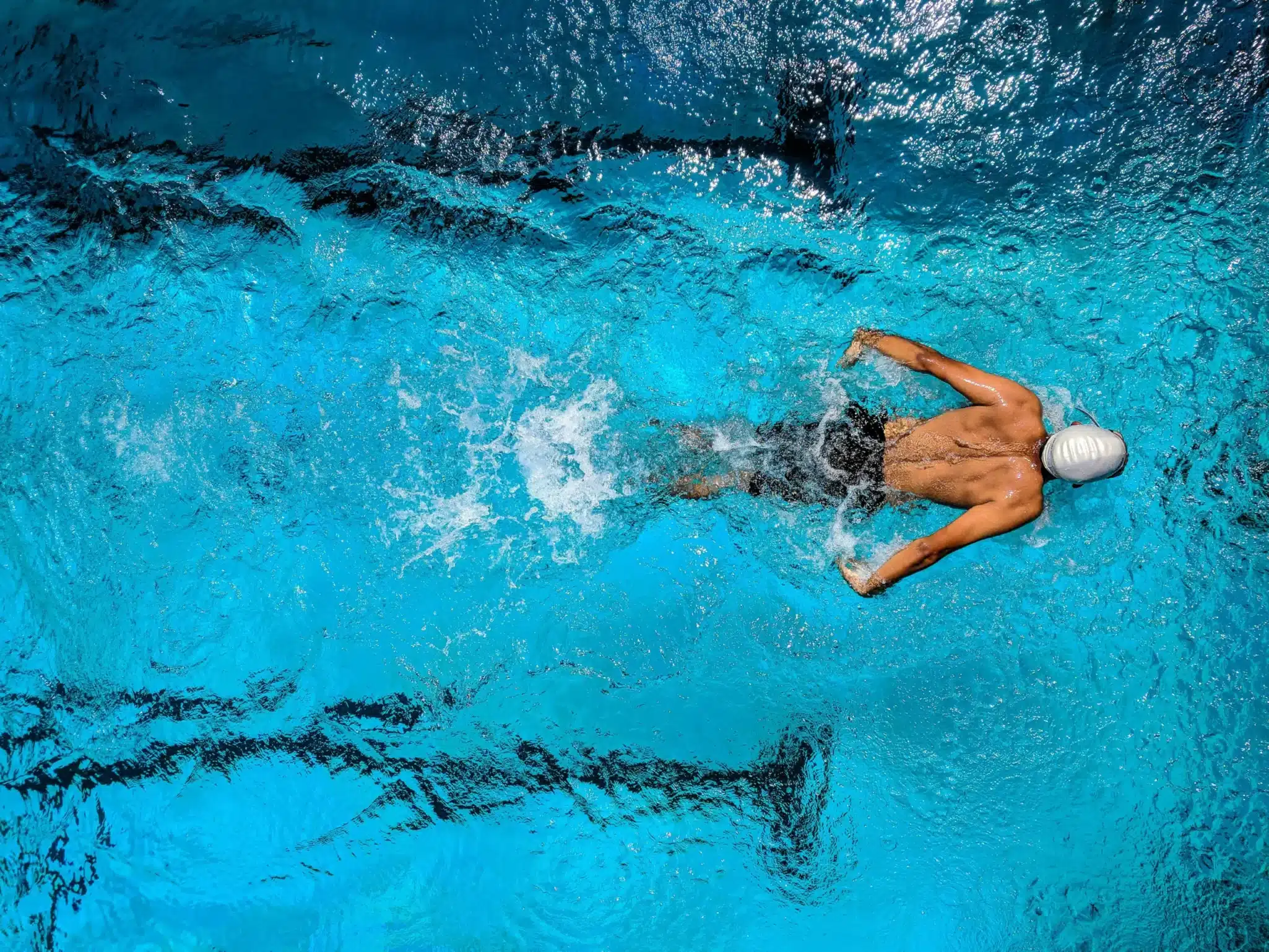Creatine is widely used in bodybuilding. Its effect on muscle makes it an effective dietary supplement for athletes seeking greater muscle strength, volume or body mass.
Although its source comes primarily from our diet and endogenous synthesis, the use of creatine monohydrate powder is also useful for saturating reserves.
How much do I need to increase my creatine reserves? How does creatine improve physical performance? For which activities is creatine recommended? In this new article, we explain all the benefits and risks.
What is creatine used for?
We start with a reminder for those who don't know what creatine is.
This natural substance comes from the diet or from endogenous synthesis, i.e. it is produced by the body fromamino acids (arginine, methionine and glycine).
It can also be ingested as part of a creatine monohydrate treatment in white powder form.
How does creatine work in the body?
Once produced or ingested, part of it is transformed into phosphocreatine (the other part being in free form), to play a part in the phosphagen¹ system. This serves to swell the muscle's stores of creatine.
To do what?
The phosphagen system is responsible for the energy the body needs to produce effort. Creatine phosphate is involved in the rapid regeneration of the adenosine triphosphate(ATP) molecule by transferring a phosphate group to adenosine diphosphate (ADP). This is how it reconstitutes ATP, which is then used to supply the energy required for muscle contraction during very high-intensity efforts.
With more stocks, the athlete who supplements has more energy reserves. As a result, they train longer and, indirectly, improve their performance.
This aid is designed for sports requiring anaerobic alactic activity, those which are short and intense, or which require brief, high-intensity restarts. It is an interesting dietary supplement for disciplines requiring strength, power and explosiveness.
The different forms of creatine available
There are many forms of creatine available on the sports nutrition market, but the most economical and effective is creatine monohydrate in powder or capsule form. It can be purchased on its own or already mixed with vitamins or proteins, in gainers for example. For the best possible dosage of each gram, the isolated form is the best and, above all, the most practical.
Other variants are flourishing on the shelves of food supplements: creatine ethyl ester, Kre-Alkalyn, but beware of well-marketed products. The only form recommended by the authorities and scientifically proven to be beneficial is creatine monohydrate.
And don't forget product quality, which must comply with European regulations. The Creapure® label is your guarantee of high-quality, pure creatine.
The proven benefits of creatine on sports performance
Speaking of creatine's effects on performance, let's see what the science has to say.
Improved muscular strength and power
Kreider has published extensively on creatine, and he's not alone. For years, research on the subject has been multiplying worldwide. The literature agrees that combining creatine monohydrate with a sports program produces real results.
Yes, because let's not forget: creatine increases the body's capacity to renew effort, so without a workout, there's no performance! This is what we call thebody's adaptation to effort, and creatine clearly increases these adaptive muscle responses.
Although the studies initially focused on bodybuilding, Kreider et al. extended their research to soccer teams. Benefits in terms of sprint series and muscle contraction efficiency were highlighted.
Its effects in endurance sports
These researchers have also demonstrated the benefits of supplementation on aerobic capacity, thanks to more efficient transport of ATP to the mitochondria, where it is stored. However, aerobic capacity is more a question of endurance sports.
So why do we say that its effects concern short, brief sports if it works on endurance sports?
In fact, the body's three energy channels are intertwined. They do not function in isolation, and some disciplines involve all three. Take soccer, for example. As the player sprints off to retrieve the ball, he calls on his anaerobic alactic pathway, the creatine pathway, to trigger his effort.
What's more, this phosphagen system renews itself by 70% in 30 seconds¹, which is why it's ideal for sprint or effort recovery, as in HIIT-type exercise or for CrossFit enthusiasts.
Its impact on weight gain
Let's put preconceived ideas in their place and distinguish weight gain from mass gain.
We often hear people ask whether creatine is fattening. It doesn't! What we mean by "fattening" is in fact an increase in body fat. Obviously, this is of no interest to performance-oriented athletes.
Creatine (indirectly) promotes muscular hypertrophy, and therefore lean mass gain. Although a slight weight gain may be felt at the start of the treatment, this remains in the order of 1 to 2 kilos, and is linked to slight water retention. Good hydration is essential during the cure.
Improved recovery after exercise
Performance parameters such as strength or power are often analyzed in the literature, but there are other performance factors such as recovery.
Research by Wax et al.³ shows the effects on improving recovery time between two high-intensity efforts. They explain this by increasing phosphocreatine reserves, which facilitate ATP resynthesis in the post-exercise phase.
Proven benefits for general health
Beyond its ergogenic effects, creatine has therapeutic virtues for overall health, and studies are multiplying on these aspects.
An advantage in the event of injury
The increased availability of creatine in cellular tissues improves their metabolism, which tends to reduce the severity of injury or illness⁴. This is all the more valid when oxygen availability is lower, as in mountaineering or other high-altitude sports.
Creatine and cognitive health
The brain also needs to replenish its energy stores. So, as with muscles, creatine plays a role in the brain.
Its action is particularly beneficial for cognitive skills requiring rapid energy availability, such as attention.
Research shows that long-term treatment increases creatine levels in the brain, facilitating cognitive functions (decision-making, memory, etc.) without side-effects.
Supplementation has been used as a playground for experiments on the treatment of neurological, neuromuscular and atherosclerotic⁵ pathologies.
It contributes to the balance known as cerebral energy homeostasis, and is known to influence working memory and intelligence. These two types of task require processing speed, which gives creatine a role in influencing brain performance.

Creatine's benefits for specific populations
Benefits for vegetarians and vegans
Creatine is found mainly in foods rich in animal proteins, with red meat , fish and white meat in pole position.
This means that people on vegetarian and vegan diets may be deficient in creatine. In this respect, research shows that there is a real interest in supplementing athletes to saturate their reserves and combat these deficiencies.
Creatine for the elderly
According to the IRBMS and the analysis of scientific reports, creatine also has a triple benefit in the elderly :
- It tends to stave off the sarcopenia or muscle wasting typical of this population by preserving lean mass;
- It protects existing cognitive functioning during moments of rest, but also in the event of stress (post-concussion), without improving cognitive abilities;
- It is thought to help slow the progression of neurological pathologies characterized by so-called muscular dystrophy (reverse hypertrophy). On this point, however, scientific knowledge needs to be supplemented by more studies.
Frequently asked questions about creatine
Is creatine a steroid?
Just as creatine is not a doping product, no, it is not an anabolic steroid.
Athletes who have tested positive for steroids have been known to use creatine. Creatine monohydrate is said to optimize the effect of steroids, but unlike steroids, it is neither illegal nor harmful to health - a major difference.
The two substances are linked, since doping products such as anabolic steroids also have an impact on the phosphagenic system and especially on phosphocreatine reserves. But there is no link or resemblance between the two. Whereas steroids are hormonal derivatives, creatine is simply a protein compound, naturally consumed in everyday food and manufactured by the human body.
Are there any health risks?
Contrary to popular belief, there is no no muscle loss after creatine supplementation.
What's more, at this stage there are no studies to show that a course of treatment has any adverse effects on health, provided it is taken at the recommended doses and without any particular underlying pathological condition.
For whom is creatine not recommended?
Some teenagers take creatine to optimize their performance. However, while there is no specificage for taking creatine, doctors agree that it is best to start taking it from the age of 18, after puberty, so as not to affect growth.
For women, creatine provides the same benefits as for men. What's more, women benefit from supplementing during particular hormonal periods, such as menstruation or menopause, when creatine levels vary according to the menstrual cycle.
However, medical advice is still required to ensure that no other health problems prevent a course of treatment. For example, anyone with a history of kidney disease should not take creatine without the advice of a nephrologist.
Does creatine cause hair loss?
No, there is no solid scientific evidence that creatine directly causes hair loss.
This belief stems from a single 2009 study that observed a slight increase in dihydrotestosterone (DHT) in creatine-supplemented rugby players6. DHT is implicated in androgenetic alopecia in genetically predisposed individuals.

The study in question is entitled "Three weeks of creatine monohydrate supplementation affects dihydrotestosterone to testosterone ratio in college-aged rugby players", published in 2009 by van der Merwe et al. in the Clinical Journal of Sport Medicine.
This study observed an increase of around 56% in the DHT/testosterone ratio in rugby players after three weeks of creatine monohydrate supplementation (25g/day for 7 days, then 5g/day for 14 days).
The main limitations of this study include:
- A small sample size (only 20 participants)
- A relatively short duration
- Lack of direct measurement of hair loss
- An initial difference in DHT levels between groups before supplementation
- Lack of control for confounding variables such as intense training
No subsequent study has managed to replicate these results, making its conclusions unreliable for establishing a causal link between creatine and hair loss.
Hair loss is mainly determined by genetics, age and chronic hormonal imbalances. Creatine, used at recommended doses, is not considered a significant factor in this process.
How do you incorporate creatine into your routine?
Recommended doses
A course of creatine monohydrate usually begins with a loading phase, in which the dose rises to 20 grams a day, divided into 4 or 5 doses. Following this initial phase, which lasts 5 to 7 days, comes a maintenance phase, in which the dose is reduced by 3 to 5 grams/day.
The most important aspect of a treatment, apart from whether it's better to take creatine before or after training, is regularity.
It is also possible to skip the loading phase to avoid possible digestive problems. In this case, creatine dosage is lower, but constant, and to achieve saturation of reserves, you need to wait longer (4 weeks). The choice of protocol depends on the objective, but remember that the reaction is not instantaneous, and it will take several days before the gain is felt.
How to take creatine
As regularity is essential, creatine is also taken on rest days.
The efficiency of absorption is enhanced if creatine intake is combined with carbohydrates. Carbohydrates raise blood insulin levels, which helps transport creatine to the muscles.
So dare to combine your powder with a carbohydrate-rich drink or meal.
Duration of supplementation
If regularity is the order of the day, remember to take your creatine as a course of treatment.
No danger on the horizon, but we tend to advise against taking the substance continuously.
Finally, researchers fear that long-term consumption without a break will irreversibly degrade the body's natural production.
So the precautionary principle remains.
What's more, it's interesting to work the body alternately at lower creatine levels (pause phase), then at higher levels (cure phase).
Conclusion
Creatine is a supplement with proven benefits, notably for physical performance, fatigue and even general health. A rapid source of energy for the muscle cell, it plays a key role in muscle growth, improving power and explosiveness.
Its easy combination with whey or other proteins makes it a recognized ally in sports nutrition. Its virtues, backed by a wealth of scientific evidence, explain why athletes are increasingly interested in it.















